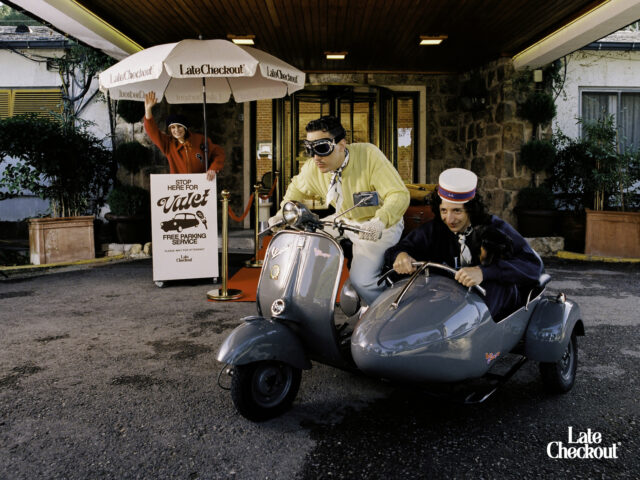Masturbation is an act as old as the origin of mankind, yet beliefs about the practice have evolved throughout history. From cave paintings that hinted at the signs of masturbation, to the future of AI in sex, we tell you how the stimulation of sexual organs has evolved.

As most readers will already know, masturbation is the stimulation of the sexual organs or erogenous zones, with the hand or another element, to provide sexual pleasure. For a long time it has been treated as taboo, but experts say that, as well as providing a pleasurable sensation, it has numerous health benefits.
By releasing endorphins, which are the chemicals in your brain that make you feel good, it can reduce stress and improve your self-esteem as it allows you to get to know yourself better, as well as improving circulation, helping you to fall asleep, among many other benefits. However, as with everything in life, there are people who feel pleasure from masturbation and it is just as valid.
The history of masturbation describes extensive changes in society with respect to ethics, social attitudes, scientific study and artistic representation throughout the history of sexuality. With this article, we will review the origin of masturbation, where it stands today, and offer a future forecast of the practice.
Masturbation throughout history: Looking back
Although there are no official records of the practice in prehistoric times, stone dildos or dildos have been found in a cave excavation at Hohle Fels (Germany); clay figures that appear to depict a woman masturbating have also been found in the megalithic temple of Hagar Qim (island of Malta); according to ancient Egyptian mythology, the god Atum “copulated with his fist” to fertilise himself and create the Milky Way.
In ancient Greece, masturbation was considered a normal and healthy activity, especially for young men. It was a way to release sexual tension and to help young men get to know their bodies in preparation for marriage. Indeed, Aristotle believed that pleasure was a necessary and natural part of life: the goal of all human activities.
However, he also believed in moderation, balance and that too much pleasure could lead to excess and moral decay. By contrast, the ancient Romans had a more negative view of masturbation: they believed that too much could lead to both physical and mental health problems and that it was a sign of weakness or lack of self-control. It was often associated with slaves and other less well-off people, and was even considered immoral.
The specific reasons for the taboo on masturbation over the centuries varied according to culture and time. In Judeo-Christian cultures, for example, it was considered a sin, as it was believed to be against the biblical commandment to “be fruitful and multiply”. In 19th century Europe, attitudes towards masturbation became more negative, due to the influence of religious and moral codes of conduct and the conservative views of Queen Victoria of England.

In the 19th century, doctors used to treat female hysteria by manually stroking patients’ clitorises until they reached orgasm. The practice of pelvic massage required a great deal of time and physical effort on the part of physicians, and eventually led to the development of mechanical devices that could reproduce such stimulation.
Although more rudimentary Roman objects for masturbation have recently been found, the first mechanical sex toy or vibrator was invented in the late 19th century by a British physician named Joseph Mortimer Granville, who designed a steam-powered device called the “Granville Hammer”. The invention of the vibrator revolutionised the “treatment” of female hysteria, making it faster and more effective. It also led to the development of personal vibrators for domestic use.
Psychoanalytic theories of the early 20th century also contributed to the creation of a taboo around masturbation. Sigmund Freud and other psychologists suggested that the practice could lead to various mental health problems, such as neurosis and psychosis. One of Freud’s most controversial ideas was the concept of ‘penis envy’, which suggested that women were inherently inferior to men because they did not have a penis.
Freud also believed that clitoral-centred female sexuality was immature and infantile, and that women would eventually outgrow clitoral pleasure and develop a mature form of sexuality centred on vaginal intercourse with a male partner. This, of course, was eventually discredited by modern sexual research.
De-stigmatisation of masturbation: our present
In the 21st century, the concept of masturbation has become accepted and destigmatised in many parts of the world. Attitudes towards masturbation have changed and it is now considered a healthy and normal part of human sexuality. One of the major changes has come with increased awareness and education about sexual health and well-being.
With the rise of the internet and social media, people have more access to information and advice about masturbation and sexual health than ever before. This has led to greater awareness and understanding of the benefits and risks of masturbation, as well as a wider range of attitudes and beliefs about the practice.
Another change has been the recognition of masturbation as a form of self-care and self-love. This change in perspective has led to greater openness and acceptance of masturbation as a positive aspect of human sexuality. Erotic toys have also played an important role in making masturbation more talked about in the public sphere.

IA in sex: the future of masturbation
While it is difficult to predict exactly what the future holds, it is clear that there is still plenty of room for innovation in the field of masturbation. Technological advances, such as interactive sensory tools, virtual reality and artificial intelligence, may revolutionise the way we approach and experience masturbation. High-tech sex toys, which can be controlled remotely or respond to voice commands, could greatly enhance the pleasure and spontaneity of intimate solo sexual experiences.

Virtual reality technology could recreate immersive and interactive environments for masturbation, allowing users to explore their desires in a safe and controlled space. This will be especially useful for those who struggle with anxiety and shyness related to sexual pleasure. AI could also help improve solo sexual experiences by providing personalised suggestions and recommendations. However, we don’t know if it could lead to isolation.
“Sexual wellness devices are being used as medical tools, with new advances in wearable technologies capable of determining biomarkers such as heart rate variability, temperature and muscle contractions,” says Megwyn White, Satisfyer’s Director of Education and a certified clinical sexologist. “In addition, the integration of technologies such as light therapy has proven effective in the treatment of a variety of sexual dysfunctions, such as vaginal dryness and pain during intercourse.
The evolution of anal sex: how its practice has been promoted.
Sigue toda la información de HIGHXTAR desde Facebook, Twitter o Instagram
You may also like...





